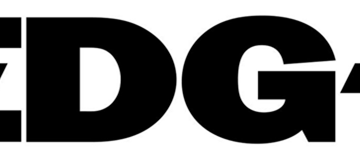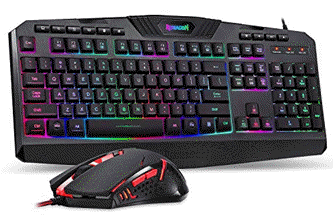2024-11-29 10:00:00
www.pcgamer.com
As Windows 10 slips beneath the icy waves of being out of support, waving forlornly as it sinks to the bottom of the ocean of obsolete operating systems, it’s worth taking a look at how its successor, Windows 11, has matured and whether it’s actually any good for gaming.
Windows 11 has a dominant position as the de-facto default operating system for PCs. Buy a new laptop or desktop and there’s a 99% chance it will come with Windows. There are a few exceptions, such as the Steam Deck’s Linux-based SteamOS, or the small number of machines you can buy without an OS installed, but pick up a gaming PC from any of the major players and you’re getting Windows 11.
It’s also where the games are. The number of items on Steam tagged as native Windows-compatible is 207,105 at the time of writing, with about 50,000 for macOS and somewhere in the region of 35,000 for SteamOS/Linux. Some of these are going to be DLC cosmetics or mission packs, but there’s still a lot more availability on Microsoft’s platform than for the others.
Windows 11 picked up a bad rep at launch. Some of this was down to aesthetics, with the moving of the Start button and taskbar icons to the centre (easily fixed in the Settings app) coming in for particular ire. The Settings app has also been under fire, with detractors asking why it exists, when there was already a perfectly good Control Panel, and noting that splitting settings between two locations is confusing. There’s also a perceived lack of customisation ability and settings: take the taskbar, which can be placed in the centre or to the left of the bottom of the screen, but not at the top or side of the desktop in the way some perverts like it. These are, it has to be said, all good points, but they don’t really affect the OS’s gaming capabilities.
Then there’s the hardware security requirement, which prevents the OS from running (easily) on PCs not made in the last seven years or so. People seem oddly attached to their old hardware, but the benefits of secure boot for malware prevention are worth the minor inconvenience. Was there a similar outcry when Windows XP introduced Windows NT-like account security to a consumer OS? We’re much too young to remember. Cough.
Even earlier than XP, Microsoft tried to reinvent Windows 98 around the web, and it didn’t go well. Buried in that OS, and still there in Windows 11 (Folder Options, General tab), is the ability to select a file or folder by hovering the pointer over it, with a single click to open as you would with a hyperlink in a web page. No one has ever used it, but Microsoft’s willingness to experiment with new ways of interacting with PCs has to be applauded even if it does result in Windows 8’s fullscreen Start menu and Metro apps, an innovation so poorly received that there was no Windows 9 in an attempt to dig a moat around the idea.
So Windows 11 makes people feel sad and is hard to ignore. But is it actually bad?
Windows 11 (and Windows 10, to an extent) sends information about your activities back to Microsoft, which some claim spikes CPU usage. Then there are the ads—you’re asked during initial setup of a new Windows 11 device whether you want adverts to be tailored to you or more generic, with the caveat that the number of ads you see won’t change (hint: turn off Widgets in Taskbar Settings). Microsoft Recall, the AI-catalogued searchable snapshots that Copilot+ PCs will take of your usage so you can more easily find something you half remember googling three weeks ago (and which seems very much like a solution in search of a problem) is being criticised as a privacy-invading nightmare and destined to be the new most quickly-switched-off feature—if it ever actually launches.
These can be seen as objectively bad things, but the fact remains Windows 11 is stable, keeps itself and its drivers up-to-date, boots up quickly and, on modern Intel processors, has a core scheduler that can more effectively spread the workload between P and E cores. It also adds Auto HDR and Dynamic Lighting and makes games easier to run in windows (er, windowed). It’s pretty dual-boot friendly, so there’s nothing to stop you from having another OS installed to test out, diving back into the familiar clutches of Microsoft if it all gets a bit too much.

As for performance, things look very close. PC Gamer’s sister site Tom’s Hardware installed Windows on a Steam Deck and wrote down some frame rate comparisons which see Windows a little bit ahead in some games, and SteamOS take the lead in others. Windows on Deck isn’t a perfect experience, as our man Dave found out, but SteamOS is a release that’s tailored to its specific hardware, like the custom version of FreeBSD that the PlayStation 5 runs, and is only available to download as a recovery image and not a flawless experience off-Deck. It’s possible to install GPU drivers and even Valve’s Proton abstraction layer on Linux (and some of them can be very good, as Tom’s Hardware discovered), but you don’t get the SteamOS frontend and Big Picture Mode can be finicky.
However, you can do it if you want, and that’s always been the guiding light of PC use. You don’t have to be tied in to one manufacturer or methodology, which is part of what makes the PC the best gaming platform as well as all the other things it can do (spreadsheets? No idea). Windows 11 has been available for three whole years now (though oddly it feels longer), and thanks to the constant stream of patches and feature updates has matured into an excellent place to game. Any enterprise of this complexity is going to come with bugs, flaws, and things that make you screw up your face in bewilderment, but there’s no denying it’s popular.
In the October 2024 results of the Steam Hardware Survey, Windows 11 has overtaken Windows 10 to gain 48.8% of users. Win 10 sits on 47.46% (and is slowly falling), for a total Windows market share of 96.54%—including the 0.28% of gamers still using Windows 7. Linux (mostly Arch as it’s the tech behind SteamOS, plus Ubuntu) sits on 2% and macOS on 1.39%. There’s no arguing with those figures, and the bulk of development efforts from game companies, hardware driver writers and other software providers is going to be focused on Windows 11, love it or hate it, because that’s where the audience is.
Take your gaming to the next level! The Redragon S101 RGB Backlit Gaming Keyboard is an Amazon’s Choice product that delivers incredible value. This all-in-one PC Gamer Value Kit includes a Programmable Backlit Gaming Mouse, perfect for competitive gaming or casual use.
With 46,015 ratings, an average of 4.6 out of 5 stars, and over 4K+ bought in the past month, this kit is trusted by gamers everywhere! Available now for just $39.99 on Amazon. Plus, act fast and snag an exclusive 15% off coupon – but hurry, this offer won’t last long!
Support Techcratic
If you find value in Techcratic’s insights and articles, consider supporting us with Bitcoin. Your support helps me, as a solo operator, continue delivering high-quality content while managing all the technical aspects, from server maintenance to blog writing, future updates, and improvements. Support Innovation! Thank you.
Bitcoin Address:
bc1qlszw7elx2qahjwvaryh0tkgg8y68enw30gpvge
Please verify this address before sending funds.
Bitcoin QR Code
Simply scan the QR code below to support Techcratic.

Please read the Privacy and Security Disclaimer on how Techcratic handles your support.
Disclaimer: As an Amazon Associate, Techcratic may earn from qualifying purchases.



























































![[5-Yrs Free Data Recovery] GIGASTONE 256GB SD Card, 4K Camera Pro, A1 V30 SDXC Memory…](https://techcratic.com/wp-content/uploads/2025/09/51F2IcqgHrL._AC_SL1000_-360x180.jpg)






































